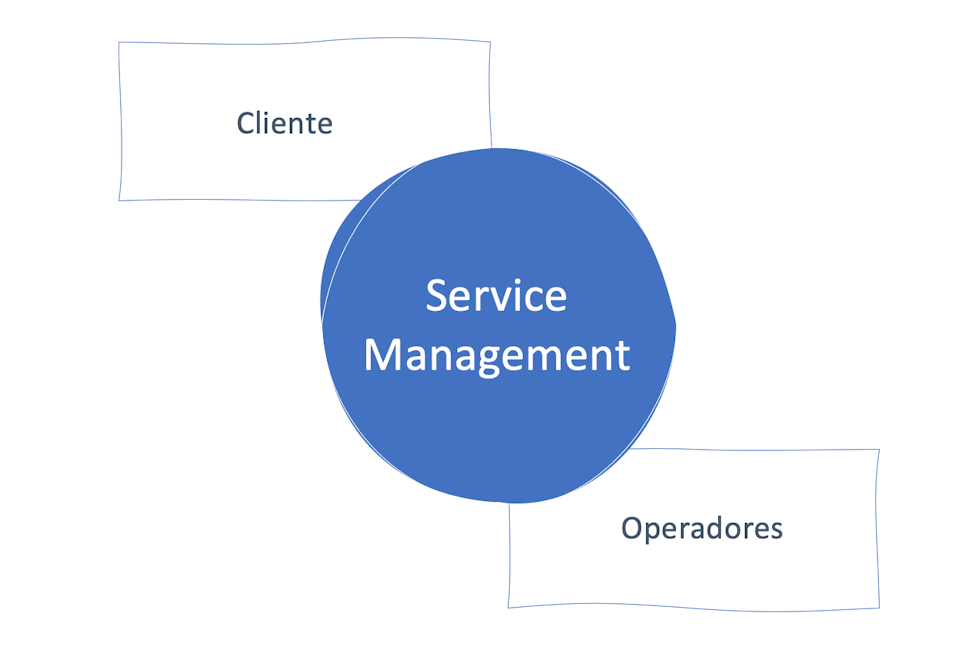Article
Comprehensive model for network footprint management

We address customer needs using an agile and flexible methodology that covers all the processes and activities
Several weeks ago, we discussed network footprint management as an opportunity and a competitive advantage. This article describes Nae’s methodology and how we use our comprehensive model to guarantee successful network footprint management.
Our methodology
Nae uses an agile and flexible methodology that covers all the processes and activities. These processes include defined tasks and deliverables to ensure process integrity and excellence in the delivery.
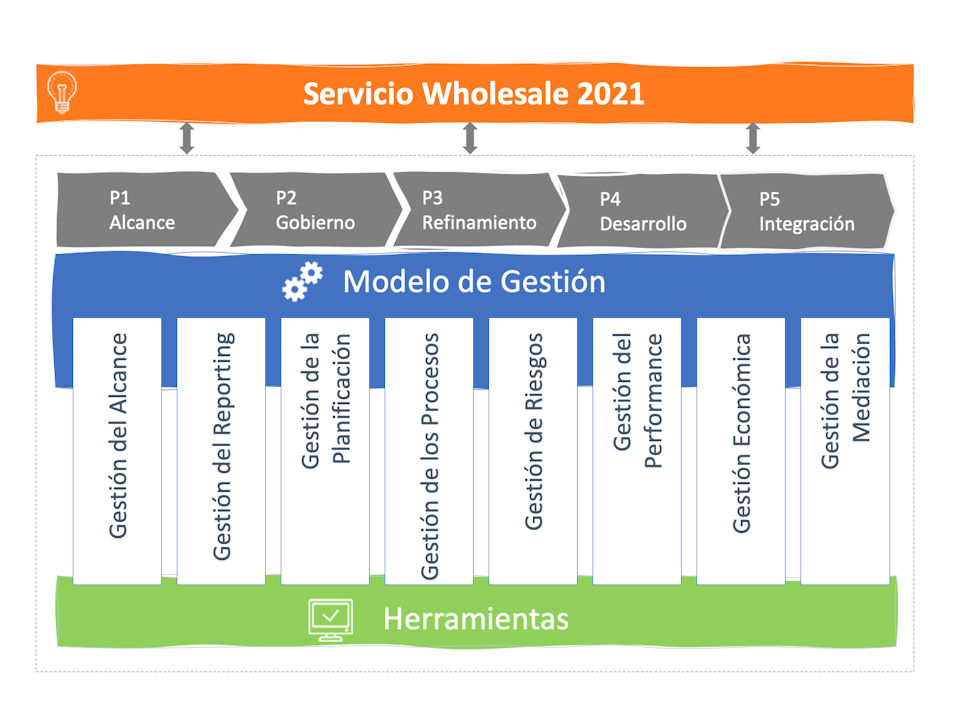
We track and perform tasks throughout all the xDSL (Digital Service Line), FTTH (Fiber to the Home) and Voice service levels according to the client’s specifications and using a proprietary management model that guarantees excellent service and reporting.
Quality service entails an iteration system between managing incidents and telephone assistance for clients and telecommunications providers, making it possible to continuously improve operations, processes and client goals.
Implementing management tools, advanced analytics and automation of dashboards and reports, both dynamic and in real time will not add value to the process.
A model based on eight types of management
Our proven management model is based on the best practices for effective development and efficient service, from beginning to end. Backed by 18 years of telecommunications industry experience, we are thoroughly familiar with multiple services and can add value where necessary by relying on our management tools, advanced analytics, and automated dashboards and reports, both dynamic and in real-time. These are the eight types of management:

1. Scope management
We manage the project scope so it complies with the requirements identified at the onset. This is done using our clearly-defined mechanisms for identifying all the dependencies and/or synergies.
2. Reporting management
We define and create reporting systems according to the client’s needs.
We have advanced analytics and reporting solutions, dashboards and business intelligence for the optimal integration of data sources, database management, analysis, processing and data visualization.
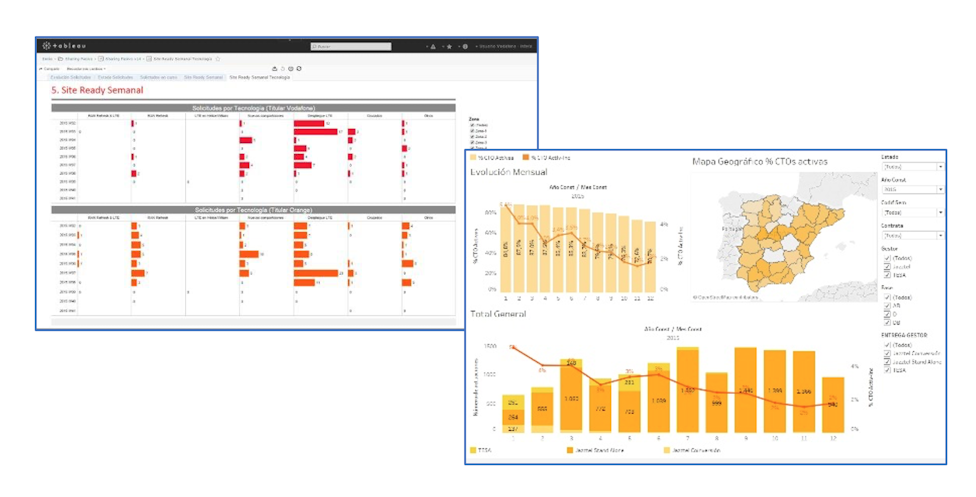
3. Plans management
We ensure compliance with the set objectives by tracking the planned activities associated with the services.
Operations plans are used to create executive plans that will be followed in the applicable committees. Any deviations that arise will be reflected to calculate the impact on reaching the set objectives.
We use the reference plans to manage potential deviations by applying the necessary preventive/corrective measures and validations, and informing the affected agents.

4. Process management
We help define, implement and analyze flow charts and improve processes within the framework of the service, guaranteeing interoperability with internal processes.

5. Risk management
We identify and classify the risks for each service, assessing their potential impact on reaching the planned milestones. For each risk identified, and depending on its priority, preventive and/or corrective actions are defined to eliminate or mitigate the risk in question, and measures are taken to prevent their emergence in the future.
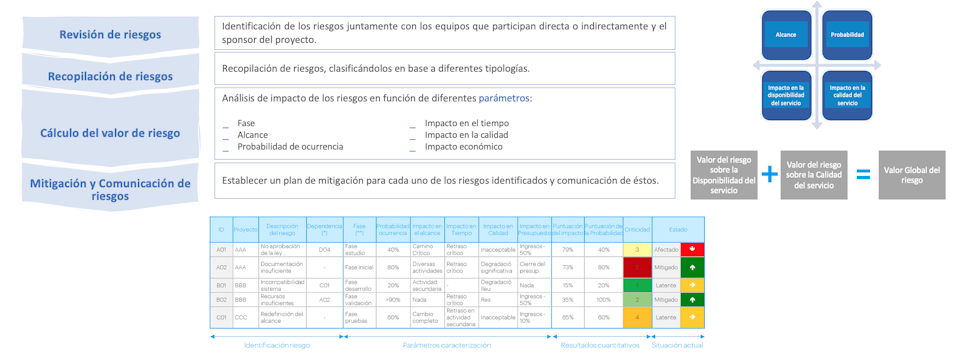
6. Performance management
We evaluate the internal quality and efficiency of the service, the technicians and the third-party operators, as well as all the activities associated with the service, to identify best practices.
We also create operational and executive dashboards that evaluate the performance of the activities linked to the service, and therefore the reporting database for the decision-making bodies that comprise the service’s governance model.

7. Financial management
We track the activity’s finances on a macro (tracking orders, certificates and SLAs, identifying deviations and measuring penalties) and micro level for each activity within xDSL, FTTH and TAC Internacional services.
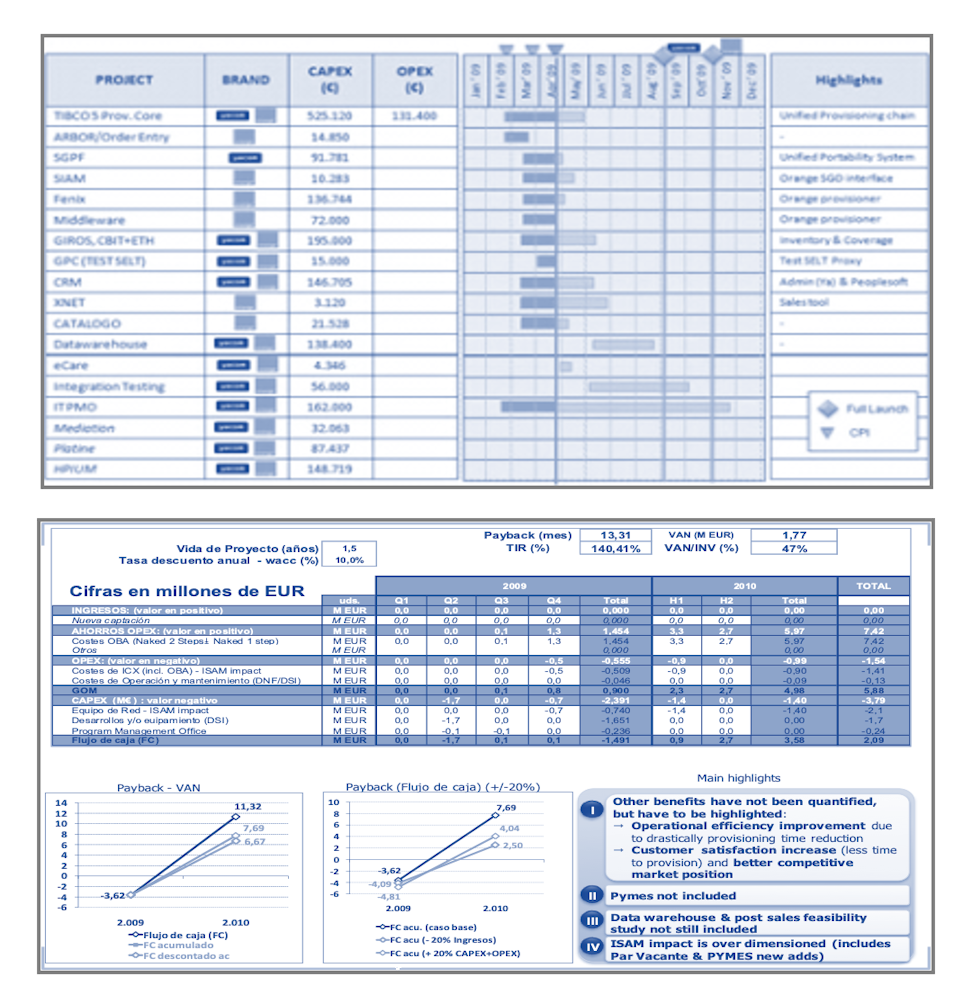
8. Discrepancy and mediation management
The service we offer should be applied to the contract and agreements between the client and the telecommunications providers. If a specific agreement does not exist, guidelines for future decision-making should be created according to the defined agreements.
